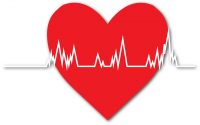UK heatwave warning: ‘Common mistake’ people make that could increase skin cancer risk
This Morning: Jon Courtenay recalls skin cancer diagnosis
We use your sign-up to provide content in ways you’ve consented to and to improve our understanding of you. This may include adverts from us and 3rd parties based on our understanding. You can unsubscribe at any time. More info
The most effective method of protection, other than covering the skin, is by wearing sunscreen.
Sunscreen, should it be of the right kind, enables an individual to tan without burning.
However, not all sunscreens are equal as some provide more protection than others.
Their level of protective capability is measured by their SPF number.

SPF stands for Sun Protection Factor; it’s a measure of how much a particular brand of sunscreen protects a person from the sun, the higher the number the greater the protection.
It is in the SPF that Consultant Dermatologist Dr Catherine Boryslewicz says Britons make “common mistakes”.
The common mistakes in question says Dr Boryslewicz are:
• Not applying enough sunscreen
• Not using a high enough SPF
• Forgetting to apply.
With regards to the right SPF Dr Boryslewicz recommends SPF 50+ as it provides the maximum level of protection against sunburn.
Boryslewicz says: “Getting sunburn is one of the biggest risk factors for developing skin cancer, in fact, according to Cancer Research UK, getting sunburn just once every two years can triple your chances of developing skin cancer.”
As well as choosing the wrong SPF for the conditions studies have shown people tend to apply less than half the amount of sunscreen required to provide an adequate level of protection.
In cases of amount needed, too much is considered better than too little.

As well as applying a correct amount of sunscreen there are other things people can do to reduce their risk in the sun according to Dr Boryslewicz.
This includes:
• Choosing reflective sunscreens
• Not forgetting to apply to the back, neck, ears, and feet
• Reapplying regularly
• Limiting exposure to UV by avoiding the sun between 11am and 3pm
• Being aware that people are still exposed to UV when in the shade
• Wearing a broad rimmed hat and sunglasses
• Wearing clothing offering maximum protection.

Undertaking these simple measures can help a person reduce their risk of skin cancer while still enabling enjoyment of the sun.
On average 100,000 cases of skin cancer are diagnosed every year.
There are two types of skin cancer, melanoma and non-melanoma.
Non-melanoma is the most common and least deadly of the pair, with melanoma the least common and more deadly in comparison.
Source: Read Full Article


